What Foods Are Safe to Eat Raw?
Throughout most of our lives we are repeatedly instructed to cook food thoroughly. While this is essential for numerous types of food – particularly certain meats and vegetables – various other types are perfectly safe and even healthy to eat raw.
The challenge that many people face is figuring out what they can and can’t eat raw. The consequences of eating raw or undercooked food can range from a mild stomach ache to serious risks of food poisoning and even death, so many of us decide it’s not worth the risk. The good news is that, over centuries of people taking these risks to learn for themselves, we now have a pretty good idea of what foods you can and can’t eat raw.
With this in mind, we’ve compiled this guide to help you easily find out this information. So, which foods need some time in the oven and which can go straight on your plate?
Can You Eat Raw Chicken?
The simple answer to this question is: no, it is not safe to eat raw chicken in the UK. Raw chicken carries significant risks of food poisoning, as it may be contaminated with salmonella and/or campylobacter. According to the NHS, around 50% of chicken sold in the UK carries the campylobacter bacteria, which is the most common cause of food poisoning in the country.
The reason why you can’t eat raw chicken, compared to other types of meat, is because bacteria can easily survive the processing procedure. Salmonella lives in the intestines of chickens and, due to the way the meat is processed, these parts can easily contaminate the rest of the chicken and remain there when sold.
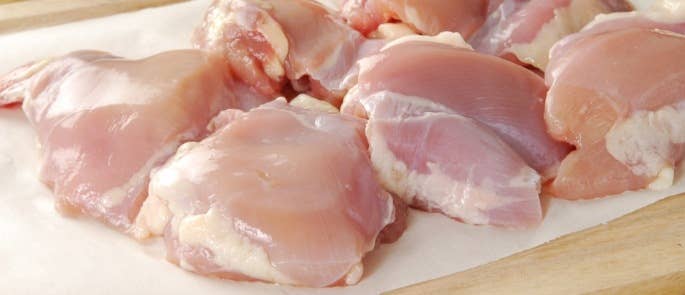
Some places in the world do prepare raw chicken dishes. For example, eating slightly undercooked chicken in Japan (known as torisashi) is not unheard of. However, the chicken they use for torisashi comes from controlled farms that make it safer to serve raw. This is not the case for chicken in the UK.
Therefore, to avoid the risks of raw chicken, you absolutely must cook it all the way through. It should reach a core temperature of at least 70, not be pink, and have no liquid running from it. You should also never wash raw chicken, as this can spread the surface bacteria to other areas of your kitchen. Cooking it thoroughly will kill all the bacteria, so there’s no need to wash it.
Can You Eat Raw Beef?
The answer to this is yes and no. Beef is in most cases safe to eat raw, as long as you sear the surface of the meat. This is because, on whole cuts of beef, bacterial contamination (such as E. coli) is usually only present on the outside. As long as you haven’t allowed the surface meat to cross-contaminate the centre, the rest of it will be safe to eat rare.
However, this is why eating undercooked ground beef (such as mince and burger patties) is unsafe, and why you should be a little more careful if dicing beef.
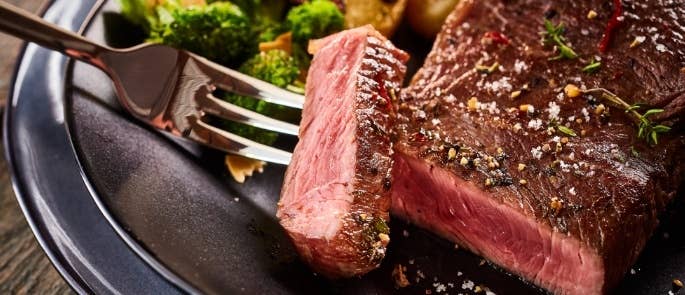
When beef is ground together for mincemeat, the surface bacteria mixes with and contaminates the rest of the meat. Similarly, when dicing beef, your utensil may become contaminated with the surface bacteria and spread into the middle as you cut. Therefore, you should fully cook beef mince and beef that you’ve cut yourself to avoid these risks.
Can You Eat Raw Pork?
The answer to whether you can eat raw pork is also a mix of yes and no. For many years the main risk of eating raw pork was trichinosis: a parasite that pigs were at risk of harbouring. This has significantly declined over the last few decades, as pigs raised for meat are no longer fed scraps that had a high chance of being contaminated with trichinosis. On modern farms, their diet is much more controlled.
This means that eating slightly pink pork or even undercooked bacon comes with lower risks than it did in the past, and if you’re ever worried that you accidentally ate raw pork, chances are you will be fine. However, it’s still recommended that you cook pork and bacon through, as the risks are not completely absent.
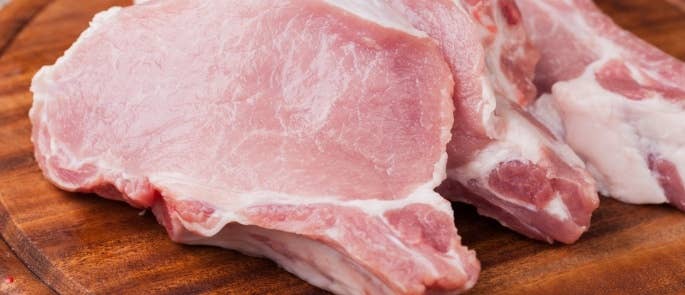
Despite the low chances of trichinosis, there may also be other risks to consider. The European Food Safety Authority (EFSA) have reported that consumers may be at risk of hepatitis E when consuming raw or undercooked pork meat and liver. This is more likely in imported pork rather than British pork however, so you should pay close attention to the source of your pork.
Can You Eat Raw Lamb?
The answer to this is similar to raw beef: yes and no. Whole cuts of lamb are safe to eat rare as long as you sear the surface. This is because, like beef, bacterial contamination (such as E. coli) is usually only present on the outside.
Furthermore, this is why eating undercooked ground lamb (such as mince and burger patties) is unsafe and why you should be a little more careful if dicing lamb.
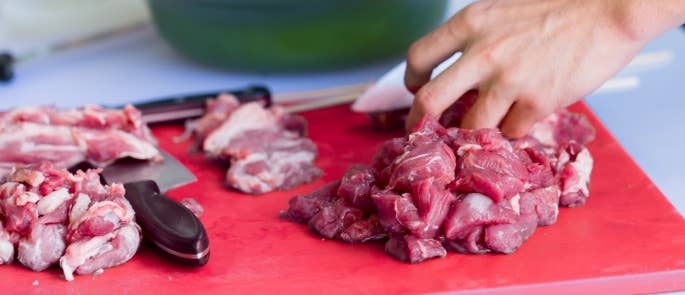
During the grounding process, the surface bacteria mixes with and contaminates the rest of the meat. Similarly, when dicing lamb, your utensil may become contaminated with the surface bacteria and spread into the middle as you cut. Therefore, you should fully cook minced lamb and lamb that you’ve cut yourself to avoid these risks.
Can You Eat Raw Eggs?
With eggs being one of the most nutritious foods and widespread ingredients, you may often wonder: is it safe to eat raw eggs? This is crucial to consider, because raw eggs do come with risks and are easy to find in all kinds of food.
The good news is that the chances of getting salmonella from raw are significantly lower nowadays, due to improved safety controls and pasteurisation. This is particularly true for eggs that are produced under the British Lion Code of Practice, according to the NHS. These types of eggs are even safe for at-risk groups to eat raw or lightly cooked (such as pregnant women, children, the elderly, and people with weakened immune systems).

However, any eggs that are not British Lion stamped, not hen eggs, and are not from the UK could have a higher risk of infection, so people should avoid eating these raw. It’s especially important for at-risk groups to ensure these types of eggs are thoroughly cooked.
You might also wonder if there are any benefits of eating raw eggs. Studies have suggested that the protein in eggs does not absorb as well into the body when you eat them raw. Therefore, it’s better to cook them if you’re looking for a higher protein gain.
Can You Eat Raw Salmon?
Whether or not you can safely eat raw salmon depends entirely on the source of the salmon and how it’s stored. Raw salmon is only safe to eat if it’s undergone the necessary fishing and freezing process, and those at your local supermarket or fishmonger usually haven’t.
You may be wondering about raw salmon that is typically sold in sushi establishments. In these cases, the salmon has been carefully farmed and stored so it’s safe to consume raw. The Food Standards Agency (FSA) requires food businesses that serve raw fish to source it from suitable farms, store them under specific deep-freezing conditions, and prepare them hygienically.
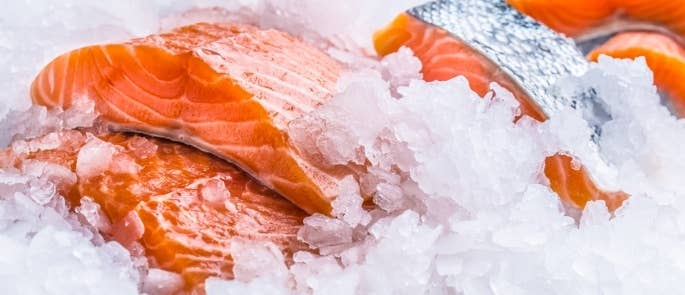
Achieving this standard at home is more difficult. Store-bought salmon is unlikely to have been sourced from farms that raise fish for raw consumption. Therefore, you should not eat raw salmon from your local fishmonger or supermarket unless you know it has gone through the necessary fishing and freezing process. If you’re eager to eat raw salmon, make sure you enjoy it at a highly-rated restaurant, as they will follow the necessary safety procedures.
Want to learn more about raw fish and sushi? Check out our article Is Sushi Safe to Eat?
Can You Eat Raw Prawns?
Like with salmon, whether or not you can eat raw prawns depends on its source and how it’s stored. Prawns that are raised specifically for raw consumption and are held at appropriate temperatures are safe to eat raw, but this usually isn’t the case for store-bought prawns.
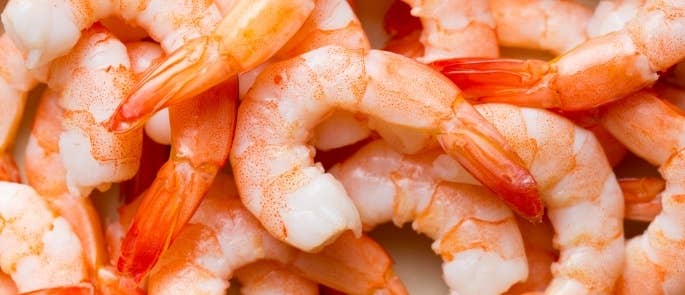
If you want to eat prawns raw, ask your fishmonger for more information about where they came from, and make sure they are cold and don’t have an off smell. However, the best practice is to simply avoid eating them raw. This is especially important for high risk groups (pregnant women, children, the elderly, and people with weakened immune systems).
Can You Eat All Fish Raw?
The short answer is no, not all fish is safe to eat raw. As discussed throughout this guide, certain kinds of fish are safe for raw consumption – depending on the type and how they’re farmed. Even so, raw fish always carries some degree of risk.
The most common risk is anisakis – a parasitic disease that may make people sick if they consume it. Fish can be inspected to remove visible anisakis parasites, but some may remain undetected. Therefore, they require thorough cooking or deep freezing to kill the remainder. There is also a risk of tapeworms, but they only affect freshwater fish, such as eel. Most types of fish that are raised for raw consumption are saltwater (including salmon, tuna, mackerel, shrimp, and shellfish), so do not have this risk.
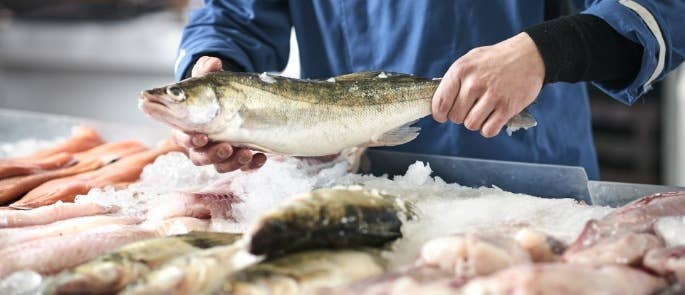
This is why you should always avoid eating raw fish unless you know it’s sourced specifically to be eaten raw. It’s also recommended that you do not eat certain fish raw under any circumstances, as they are highly prone to parasites. This includes haddock, cod, pollock, and hake. Furthermore, higher risk groups (children, the elderly, pregnant women, and people with weakened immune systems) should avoid all raw fish.
Businesses with a high food hygiene rating usually have appropriate food safety procedures to reduce these contamination risks to as low as possible. So, if you do want to eat raw fish, make sure you eat at highly-rated establishments.
Can You Eat Raw Potatoes?
Although it is not dangerous to eat raw potatoes, their high starch content makes them difficult to digest and they aren’t as nutritious as when they’re cooked. The real danger however is when potatoes turn green or sprout, as they produce high quantities of solanine that is highly toxic to consume.
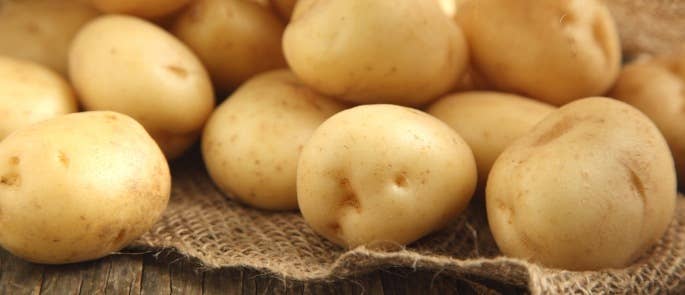
Therefore, there is no benefit of eating raw potatoes. You should ensure you cook them thoroughly or throw them away if they’re green or sprouting – these are not safe to eat raw or even cooked.
Can You Eat Raw Mushrooms?
The general consensus is that you should not eat mushrooms raw. This is because they are difficult to digest, have lower nutritional value, and can contain certain toxins when raw, depending on the type of mushroom. This includes the standard white button mushroom. Therefore, you should cook mushrooms to break down the toxins and cell walls that make them hard to digest.
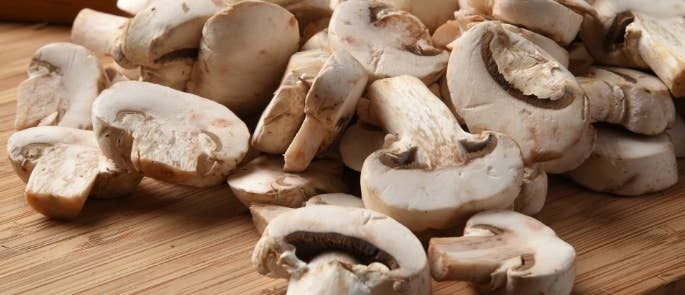
Studies carried out by experts have revealed that the risks posed by potential toxins is fairly low. However, because of the other downsides to eating them raw, it’s much healthier and safer to cook your mushrooms, even lightly, before you eat them. To preserve and increase their nutrients as much as possible, it’s best to grill and even microwave them. To be on the safe side, you should always follow the instructions on the packet or do further research into the specific mushrooms you’re eating.
Can You Eat All Vegetables Raw?
Although many vegetables are perfectly safe and even healthy to eat raw, this does not apply to all vegetables. Many of them are difficult to digest and contain harmful toxins in their raw state, so it’s crucial to know which you should cook first. So, what vegetables can you eat raw?
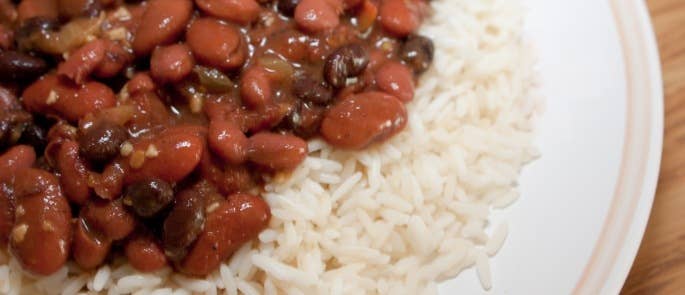
The easiest way to determine which you can eat raw is to recognise which you can’t, as most are fine to consume raw (such as tomatoes, carrots, onions, spinach, peppers, and many more). Potatoes and mushrooms are amongst vegetables that you shouldn’t eat, as discussed above in their own sections.
Other examples of vegetables that you shouldn’t eat raw include:
- Kidney and castor beans. Raw kidney and castor beans each contain a component (known as lectins), which can be toxic to consume. This can cause symptoms similar to food poisoning. To remove this risk, you should soak and boil the beans before eating them.
- Lima beans. These are dangerous to eat raw, as they contain a substance that breaks down into hydrogen cyanide. This can cause sickness and even death. As with kidney and castor beans, you should soak and boil lima beans to remove the risk.
- Olives. Although not harmful, raw olives have an unpleasant texture and a bitter taste. Soaking them in water or brine draws out the substance that makes them bitter, making them nicer to eat. This has usually already been done when you buy olives.
- Rhubarb leaves. The leaves of rhubarb contain oxalic acid, which is toxic to consume. It would be difficult to eat an amount that’s high enough to be fatal, but consuming any amount can still put you at risk of an upset stomach and even kidney damage.
- Cruciferous vegetables (including broccoli, cauliflower, and cabbage). These vegetables are hard to digest raw and can even cause issues for those with thyroid conditions. Although cooking can affect the vitamins in these vegetables, cooking them on a low heat with less water can help preserve the goodness (so avoid boiling them).
- Cassava. It contains high levels of toxic cyanide. You must peel, wash, and cook cassava to make it safe to eat.
- Aubergine (eggplants). It can be harmful to eat raw aubergine, as it contains the same harmful chemical as raw potatoes (solanine). However, you’d need to consume a large amount to suffer harmful symptoms. To be on the safe side (and to make them more pleasant to eat) you should cook them anyway.
What Other Raw Foods Should I Be Aware Of?
There are also various other types of foods you should know about in terms of raw consumption. Some have increased benefits when you consume them raw, while others are highly dangerous.
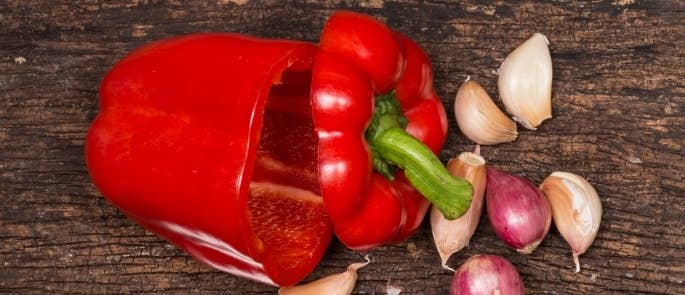
For example:
- Garlic. Although it can be unpleasant to do so, there are numerous nutritional benefits of eating raw garlic. It can boost your immune system, reduce blood pressure, provide antioxidants, and lower cholesterol. You can add raw garlic to your diet by using it as seasoning, garnish, or by melting it into butter on toast (your own homemade garlic bread!).
- Red Peppers. Cooking red peppers can decrease their vitamin C content, so you should aim to add them to your meals raw wherever possible. For example, you could cut it into a salad or slice them into sticks (and have with a dip like hummus) for a healthy snack.
- Beansprouts. Due to the way beansprouts grow, they may be contaminated with harmful bacteria, including E. coli and salmonella. According to the NHS, they are responsible for many cases of food-borne illnesses. Therefore, you should always cook them to remove this risk.
- Flour. As flour is not intended to be eaten raw, the wheat is not usually treated. Therefore, it could be contaminated with pathogens, including E. coli. If you want to eat something containing raw flour, you should only do so if it contains heat-treated flour, which makes it safe for raw consumption.
- Bitter almonds. These are a different variety of the almonds you normally eat. They contain high levels of hydrogen cyanide, which is extremely dangerous to consume. As few as 10 is enough to kill a child – 70 for an adult. Fortunately, they are not widely sold raw, but you must roast them if you do purchase them raw.
If you feel overwhelmed learning about the foods you can and can’t eat raw, the good news is that most of them come with safe cooking instructions that help you know what to do. However, after reading this guide, you should feel more confident about eating certain foods raw and should be able to easily avoid the risks.
What to Read Next:
- How to Defrost Food Safely
- Can I Cook This From Frozen?
- How Long Does Food Last in the Freezer?
- Food Safety Myths and Facts
- Serving Medium Cooked Burgers – Safety Guidance
- Food Hygiene Training







